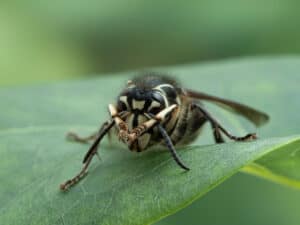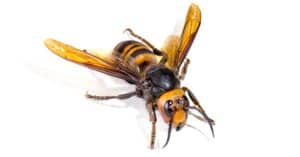A focused individual took on quite the task when he put together a pain scale specifically for stinging insects. But how did he manage this? He got stung by them all! Thanks to his work, we know just what to expect with each sting. Discover the types of wasps in North Carolina tanked by the pain of their sting!
The Schmidt Pain Index
When you have a passion, you might engage in some unusual activities. For entomologist Justin Schmidt, it was purposely getting stung by a variety of stinging insects just so he could document the potency of their venom. It doesn’t exactly sound like a regular workday, but it sure made for an interesting paper, which he put together in 1983. He managed to describe, in great detail, just how each sting felt. He put together the pain index that ranged between zero and four, with four being the most painful.
Types of Wasps In North Carolina
1. Eastern Cicada Killer
Schmidt Pain Index Score: 2
Eastern cicada killers are also called sand hornets, even though they are not hornets. They measure about 0.6 to two inches long. They are black and yellowish. The female uses her sting as a defense mechanism and to paralyze her prey. They are a bit bigger than the males. Their abdomens are black with yellow markings while the males have a yellow face and a yellow band on their abdomens.

Eastern cicada killers grow intimidatingly large.
©iStock.com/JasonOndreicka
The males sometimes appear aggressive to humans, but they are not dangerous as they cannot sting. The female cicada killers emerge during the first summer months and after mating, they look for a place to nest. They start working on the nest by first locating a well-drained area. As mean as they sound, they serve a purpose in the ecological arena as they eat the cicadas, and cicadas are considered pests. This sting is one you’ll remember!
2. Yellow Jacket
Schmidt Pain Index Score: 2
Yellow jackets are types of wasps in North Carolina and have a bit of a behavioral issue. They can be a little intimidating. Their social structure consists of a queen, male drones, and female workers. The reproduction responsibility belongs to the queen. The workers master their building skills using a variety of materials. Typically, they use a mix of wood, chew it down with their own saliva, and then they build. They can either build on walls or create underground burrows. When they sting, you can definitely feel it!
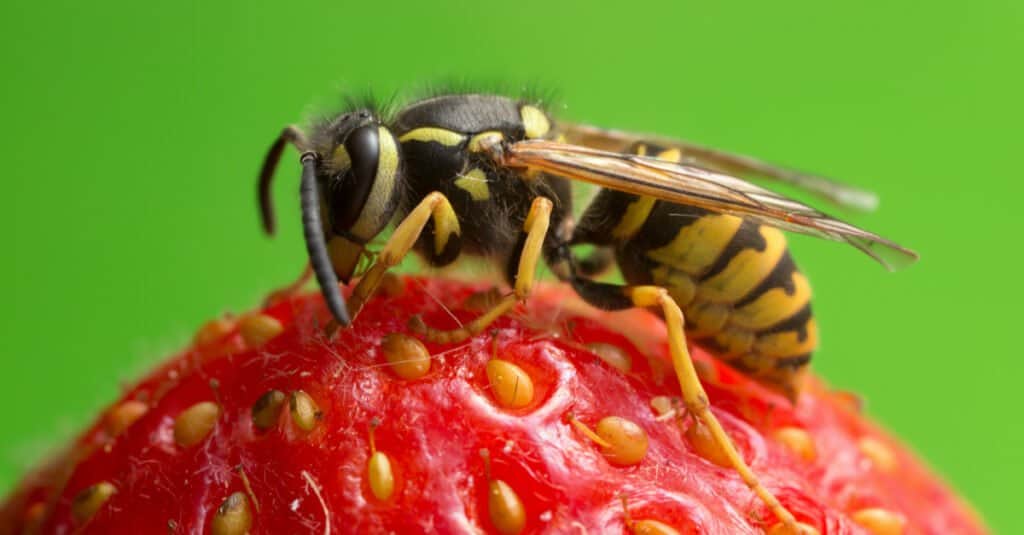
Yellow jackets like sweets.
©Henrik Larsson/Shutterstock.com
3. Bald-Faced Hornet
Schmidt Pain Index Score: 2
Bald-faced hornets’ appearance is mostly black on their body with white markings on their faces, thoraxes, and abdomens. Despite their name, they’re not a true hornet. The bald-faced hornet is a type of yellow jacket that lives in colonies. The pain of a bald-faced hornet’s sting is right up there with cicada killers and yellow jackets.
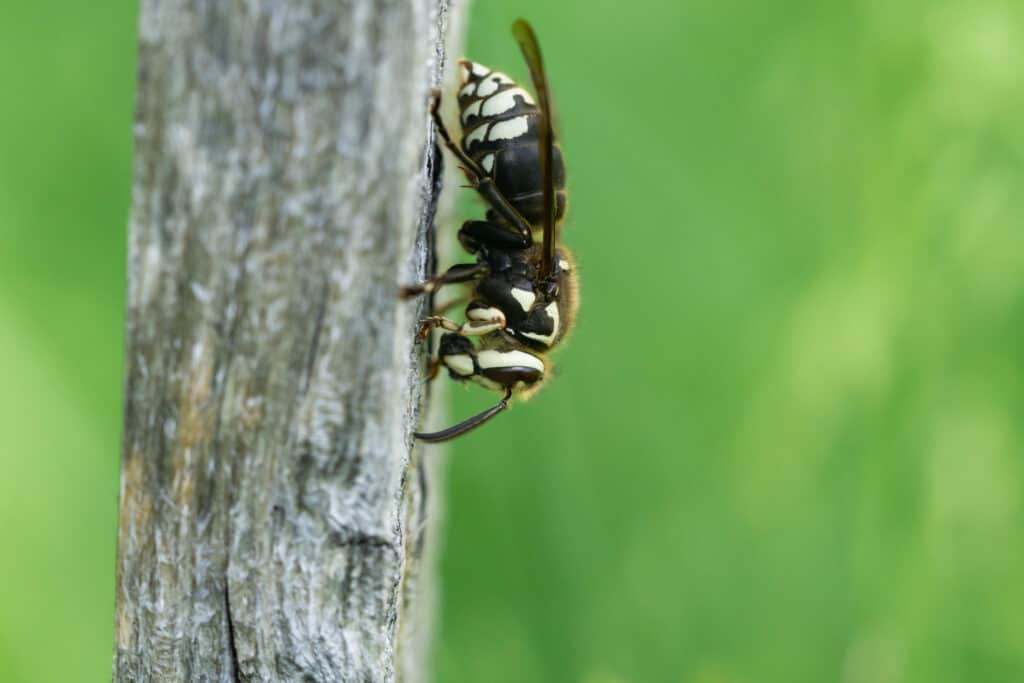
Bald-faced hornets are not true hornets. They’re wasps!
©iStock.com/ErikAgar
These wasps mostly eat insects, flies, spiders, and caterpillars and display defensive behavior when their home is threatened. They sting repeatedly and with every sting they release pheromones that send out an alert to other bald-faced hornets in the area. Once the others pick up on it, they come out like soldiers to do what they do best. These stings are powerful and memorable, especially when compounded.
4. Red Paper Wasp
Schmidt Pain Index Score: 1.5
The red paper wasp’s sting is more tolerable but — let’s be honest. Pain is pain. Their scientific name is Polistes Carolina and their size ranges between 0.5 to one inch in length. Their color is reddish brown with dark wings. In order to build their nest, they chew plant fibers with saliva. With these materials and their own fluids, they are able to construct the paper-like material their nests are composed of. They tend to build these on tree branches, eaves, and other protected areas. The pain of their sting is rated a little lower than the others on this list.
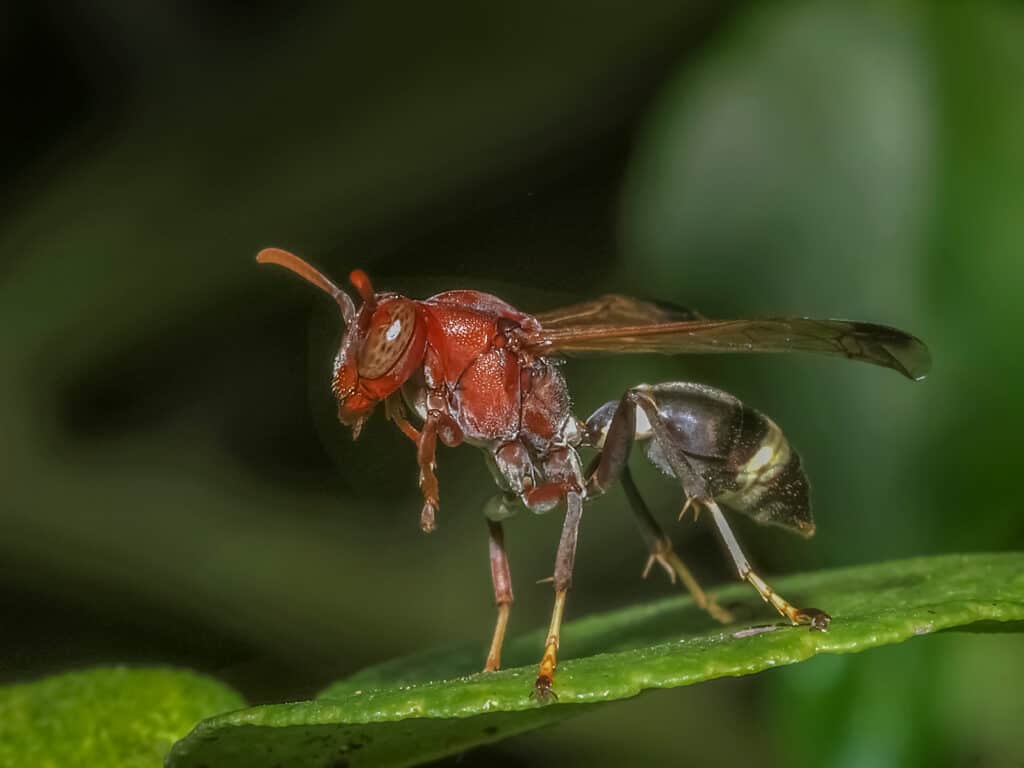
Red paper wasps are native to the U.S.
©Yuttana Joe/Shutterstock.com
5. Mud Dauber
Schmidt Pain Index Score: 1
This pain level is the least painful (excluding zero which is a harmless sting) and hopefully, you never get stung! But if you ever do, choose these types of wasps in North Carolina to get stung by. These wasps have a unique nest-building technique. Mud daubers gather mud and form cells to attach the tube-like structures to walls, buildings, tree trunks, etc. That’s where the name came from. These wasps aren’t aggressive and primarily feed on spiders. They are different colors, shapes, and sizes. To get stung by one, you’d really have to provoke it as they’re not that interested in you and would rather go about their days unbothered.
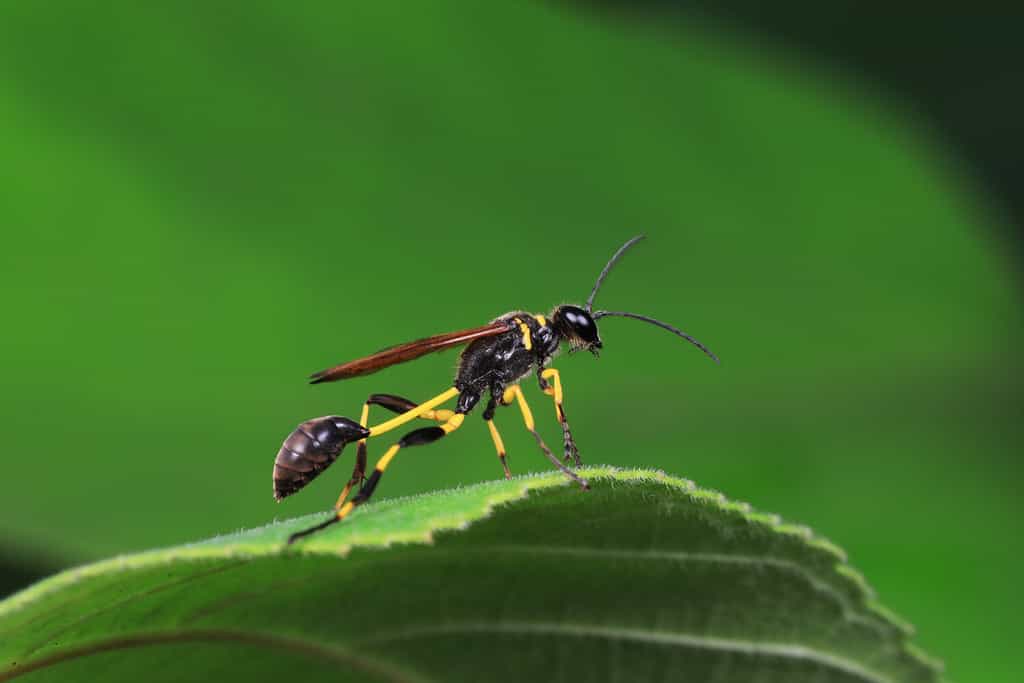
Mud daubers are distinguished by their thread-like waist.
©chinahbzyg/Shutterstock.com
Types of Wasps in North Carolina Ranked By Pain
Here are the types of wasps found in North Carolina ranked by pain:
| Rank | Wasp Species | Schmidt Pain Index Score |
|---|---|---|
| 1 | Eastern Cicada Killer | 2 |
| 2 | Yellow Jacket | 2 |
| 3 | Bald-Faced Hornet | 2 |
| 4 | Red Paper Wasp | 1.5 |
| 5 | Mud Dauber | 1 |
The photo featured at the top of this post is © Geza Farkas/Shutterstock.com
Thank you for reading! Have some feedback for us? Contact the AZ Animals editorial team.





